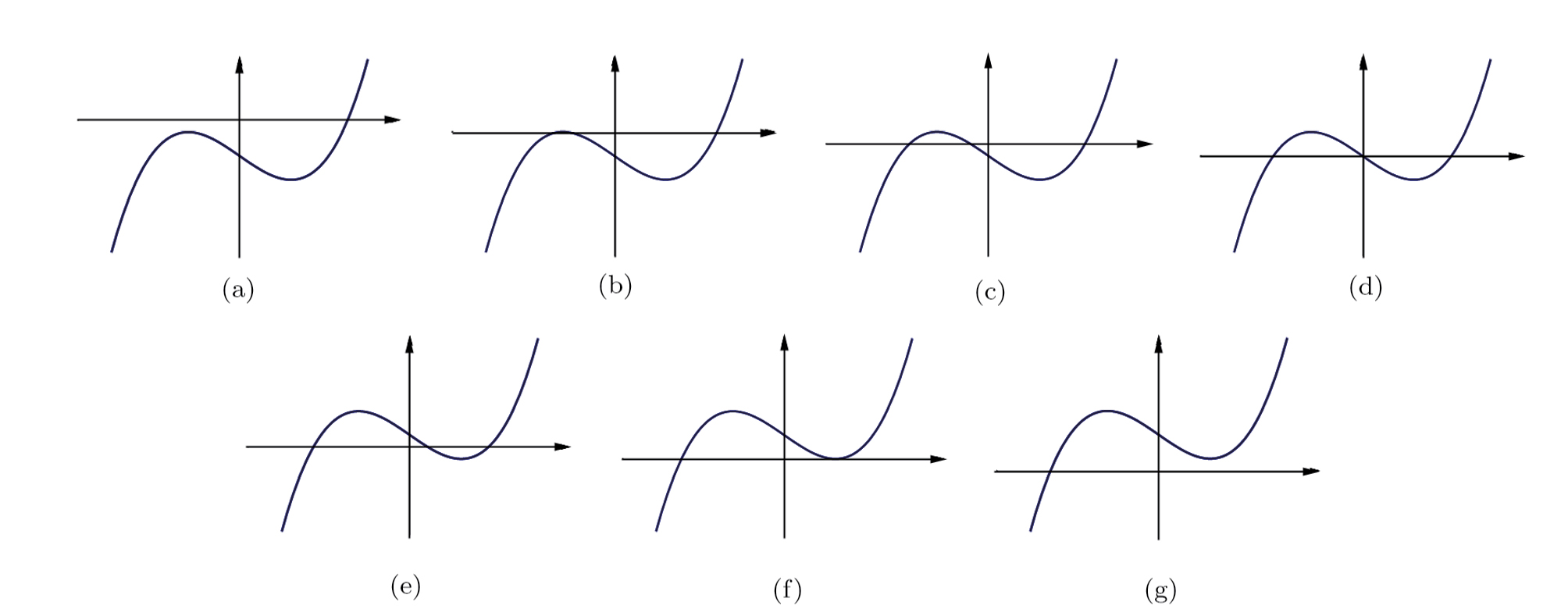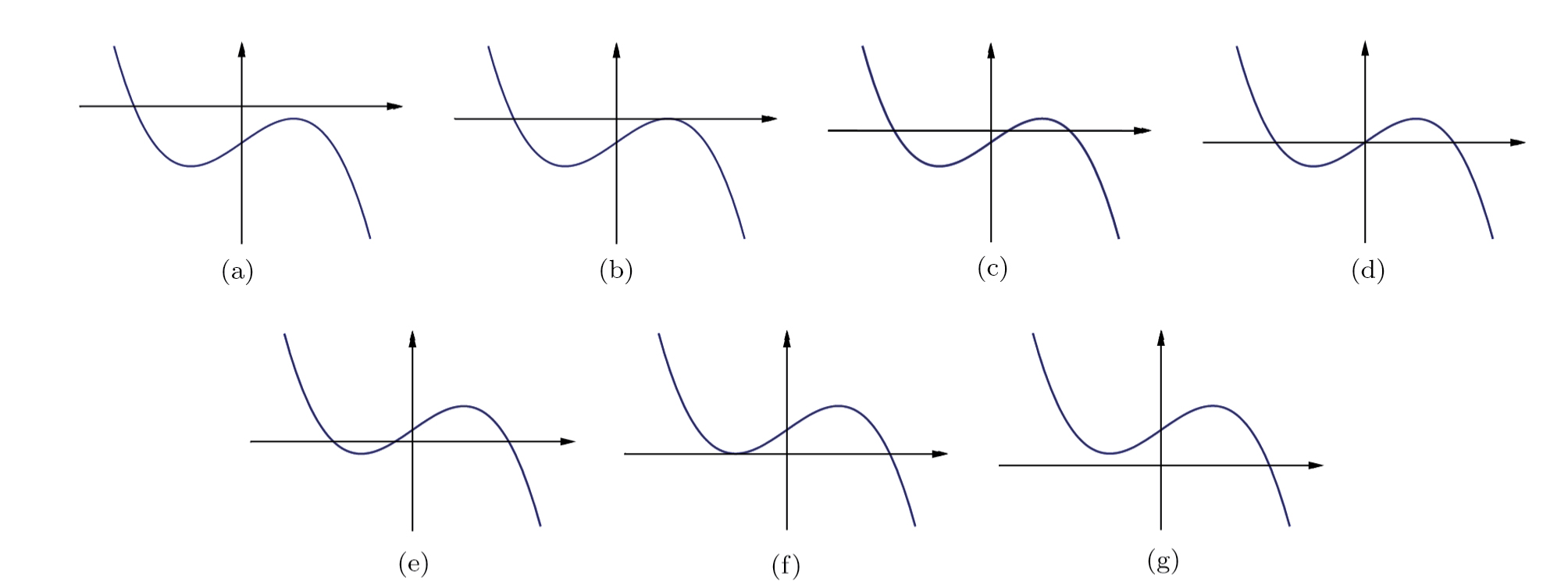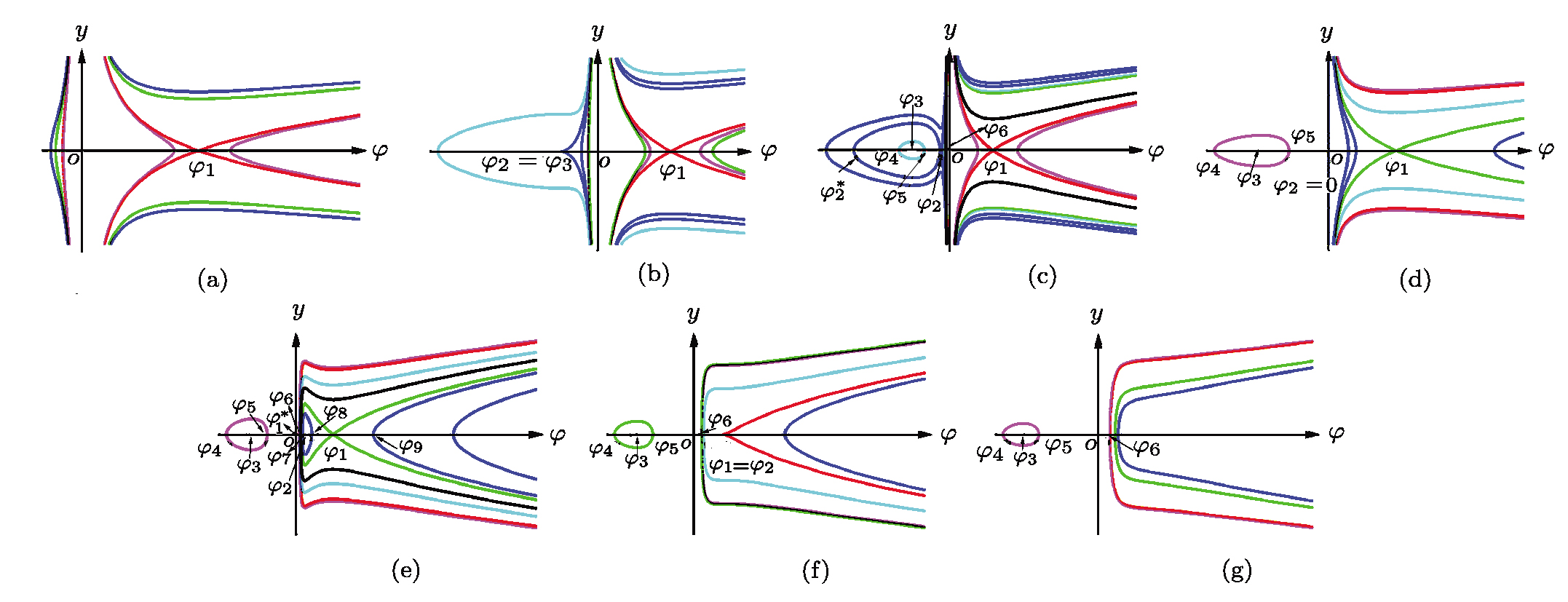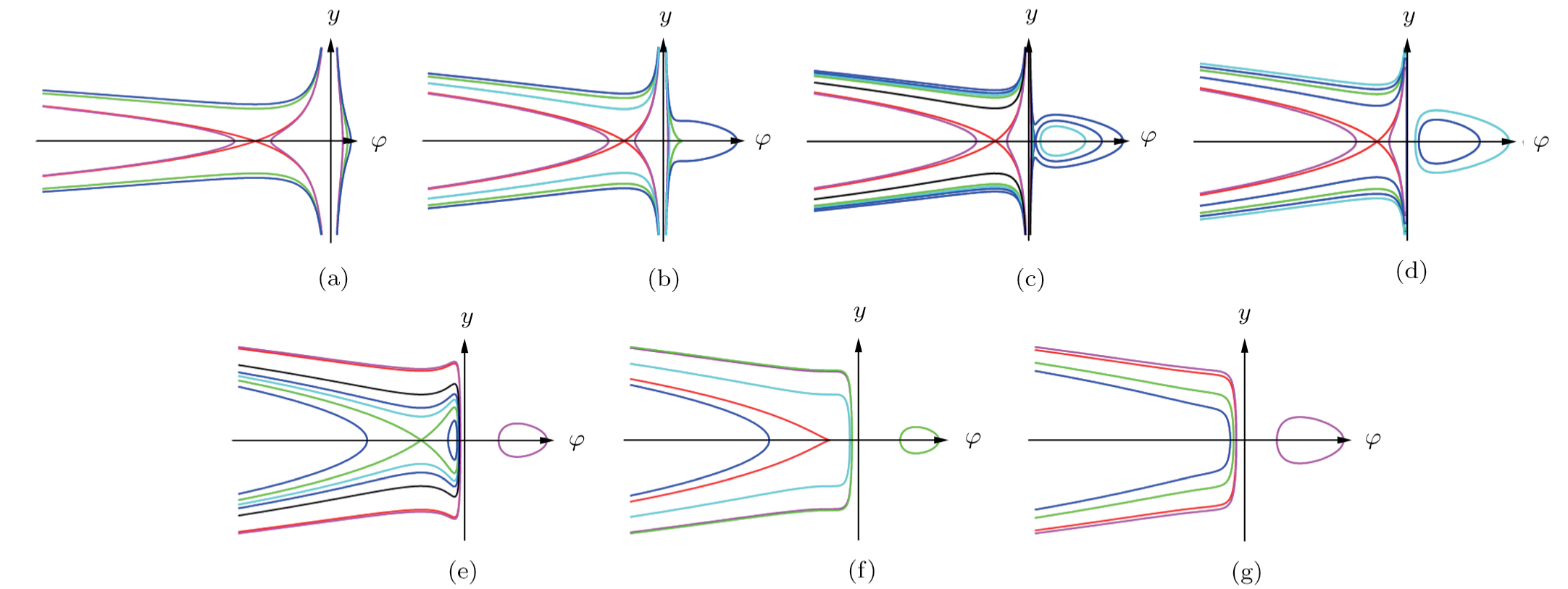† Corresponding author. E-mail:
Supported by the National Natural Science Foundation of China under Grant No. 11701191 and Subsidized Project for Cultivating Postgraduates’ Innovative Ability in Scientific Research of Huaqiao University
In this paper, we study the bifurcations and dynamics of traveling wave solutions to a Fujimoto-Watanabe equation by using the method of dynamical systems. We obtain all possible bifurcations of phase portraits of the system in different regions of the parametric space. Then we show the sufficient conditions to guarantee the existence of traveling wave solutions including solitary wave solutions, periodic wave solutions, compactions and kink-like and antikink-like wave solutions. Moreover, the expressions of solitary wave solutions and periodic wave solutions are implicitly given, while the expressions of kink-like and antikink-like wave solutions are explicitly shown. The dynamics of these new traveling wave solutions will greatly enrich the previews results and further help us understand the physical structures and analyze the propagation of the nonlinear wave.
The Fujimoto-Watanabe equation

In this section, we present the bifurcations of phase portraits corresponding to Eq. (
Substituting u(x,t) = φ(ξ) with ξ = x − ct into Eq. (

Integrating straightforwardly Eq. (

Letting y = φ′, we obtain a three-parameter planar system



System (
To study the singular points and their properties of system (

We can easily obtain the graphics of the function f(φ) in Figs.
 | Fig. 1 The graphics of the function f(φ) when α < 0 and c > 0. (a)       |
 | Fig. 2 The graphics of the function f(φ) when α > 0 and c < 0. (a)       |
Let λ(φ*,y) be the characteristic value of the linearized system of system (

From Eq. (
We summarize the number, relative positions and dynamical properties of singular points of system (
Therefore, based on the above analysis, we obtain all possible phase portraits of bifurcations of system (
 | Fig. 3 The phase portraits of system (      |
To state conveniently, we introduce some marks,

Our main results will be stated in the following theorem, and the proof follows. Note that we only focus our attention on the case when α < 0 and c > 0 about the main results, because the other case when α > 0 and c < 0 can be considered similarly.
In this paper, through all possible bifurcations for the system under different parameters conditions, we show the existence and dymanics of traveling wave solutions including solitary wave solutions, periodic wave solutions, compactons and kink-like and antikink-like wave solutions. Moreover, the expressions of solitary wave solutions and periodic wave solutions are implicitly given, while the expressions of kink-like and antikink-like wave solutions are explicitly shown. The dynamics of these new traveling wave solutions will greatly enrich the previews results and further help us understand the physical structures and analyze the propagation of the nonlinear wave.
| [1] | |
| [2] | |
| [3] | |
| [4] | |
| [5] | |
| [6] | |
| [7] | |
| [8] | |
| [9] | |
| [10] | |
| [11] | |
| [12] | |
| [13] | |
| [14] |













